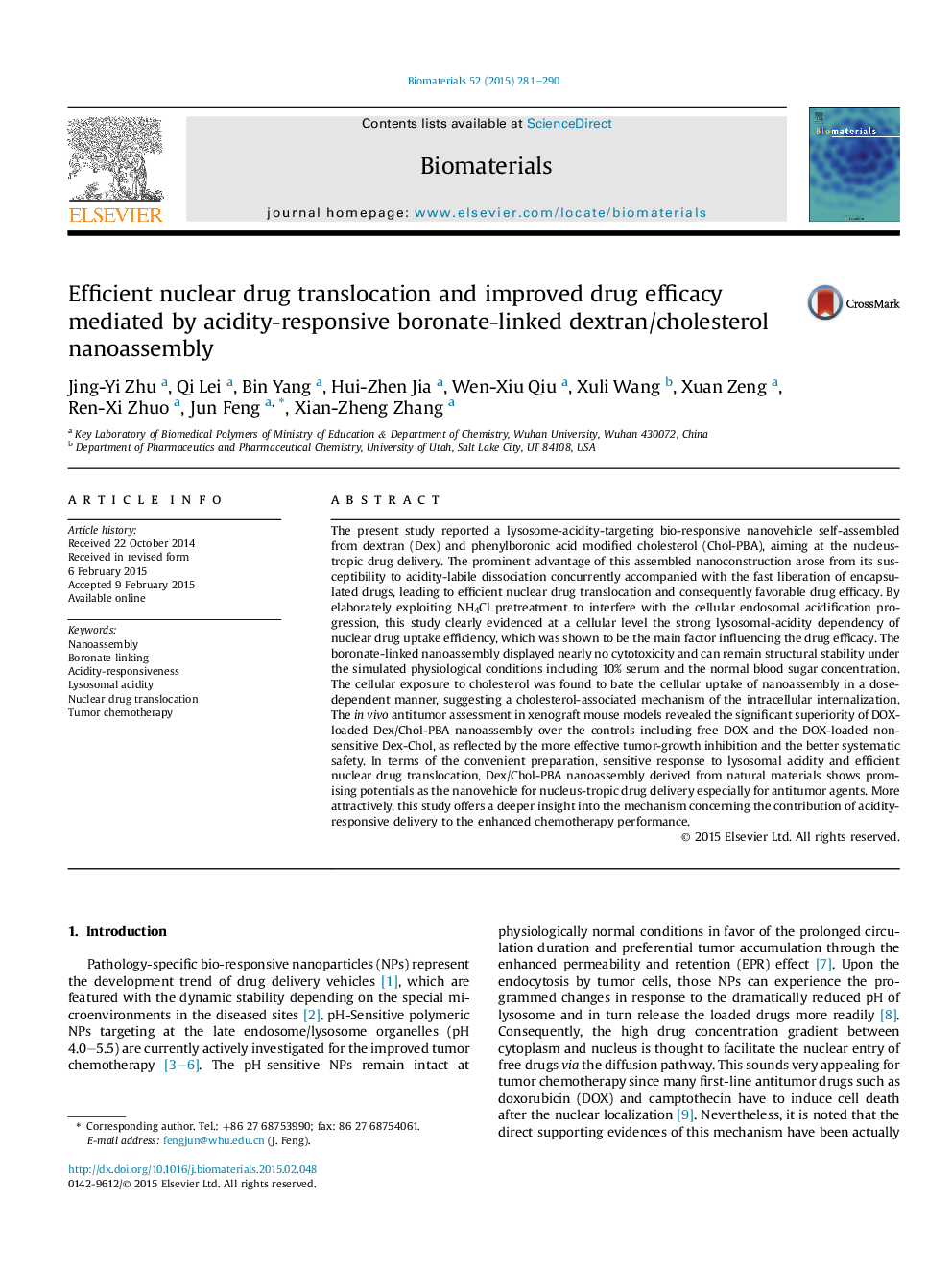| Article ID | Journal | Published Year | Pages | File Type |
|---|---|---|---|---|
| 6485987 | Biomaterials | 2015 | 10 Pages |
Abstract
The present study reported a lysosome-acidity-targeting bio-responsive nanovehicle self-assembled from dextran (Dex) and phenylboronic acid modified cholesterol (Chol-PBA), aiming at the nucleus-tropic drug delivery. The prominent advantage of this assembled nanoconstruction arose from its susceptibility to acidity-labile dissociation concurrently accompanied with the fast liberation of encapsulated drugs, leading to efficient nuclear drug translocation and consequently favorable drug efficacy. By elaborately exploiting NH4Cl pretreatment to interfere with the cellular endosomal acidification progression, this study clearly evidenced at a cellular level the strong lysosomal-acidity dependency of nuclear drug uptake efficiency, which was shown to be the main factor influencing the drug efficacy. The boronate-linked nanoassembly displayed nearly no cytotoxicity and can remain structural stability under the simulated physiological conditions including 10% serum and the normal blood sugar concentration. The cellular exposure to cholesterol was found to bate the cellular uptake of nanoassembly in a dose-dependent manner, suggesting a cholesterol-associated mechanism of the intracellular internalization. The in vivo antitumor assessment in xenograft mouse models revealed the significant superiority of DOX-loaded Dex/Chol-PBA nanoassembly over the controls including free DOX and the DOX-loaded non-sensitive Dex-Chol, as reflected by the more effective tumor-growth inhibition and the better systematic safety. In terms of the convenient preparation, sensitive response to lysosomal acidity and efficient nuclear drug translocation, Dex/Chol-PBA nanoassembly derived from natural materials shows promising potentials as the nanovehicle for nucleus-tropic drug delivery especially for antitumor agents. More attractively, this study offers a deeper insight into the mechanism concerning the contribution of acidity-responsive delivery to the enhanced chemotherapy performance.
Keywords
Related Topics
Physical Sciences and Engineering
Chemical Engineering
Bioengineering
Authors
Jing-Yi Zhu, Qi Lei, Bin Yang, Hui-Zhen Jia, Wen-Xiu Qiu, Xuli Wang, Xuan Zeng, Ren-Xi Zhuo, Jun Feng, Xian-Zheng Zhang,
